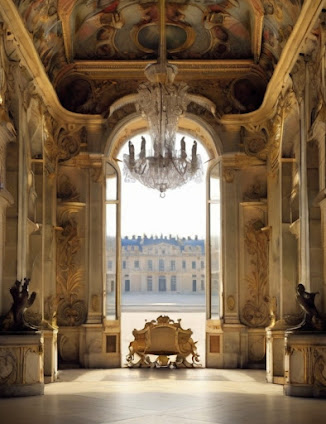 |
| Versailles Palace (Versailles, France) |
The Palace of Versailles, located near Paris, France, is one of the most famous and opulent royal residences in the world. Here's a brief history of the Versailles Palace:
Origin: The palace's history dates back to the early 17th century when Louis XIII built a hunting lodge on the site. His son, Louis XIV, later expanded and transformed it into a grand palace.
Louis XIV's Transformation: Louis XIV, the "Sun King," decided to move the royal court from Paris to Versailles in 1682. He undertook an ambitious project to expand and embellish the existing structure, turning it into a symbol of absolute monarchy and French power.
Architectural Marvel: The construction and expansion of the palace were overseen by architects Louis Le Vau, Jules Hardouin-Mansart, and landscape architect André Le Nôtre. The palace features the Hall of Mirrors, the grand gardens, and the iconic Hall of the Battles.
Symbol of Power: Versailles became the center of political power in France and the residence of the French monarchs. The opulence of the palace, with its extensive gardens, lavish furnishings, and elaborate ceremonies, was intended to awe visitors and assert the dominance of the French monarchy.
Treaty of Versailles: The palace is also historically significant for hosting the signing of the Treaty of Versailles in 1919, which marked the end of World War I. The treaty imposed severe penalties on Germany and redrew the map of Europe.
Louis XVI and Marie Antoinette: The palace continued to play a central role in French history during the reign of Louis XVI and his queen, Marie Antoinette. However, the excessive spending on the palace and the court contributed to the financial difficulties that led to the French Revolution.
French Revolution: In 1789, the revolutionaries stormed the palace, and Louis XVI and Marie Antoinette were eventually forced to leave. The monarchy was abolished, and Versailles lost its status as the royal residence.
Museum and Tourist Attraction: In the 19th century, Versailles was transformed into a museum dedicated to French history. Today, the Palace of Versailles is a UNESCO World Heritage Site and a major tourist attraction, drawing millions of visitors each year who come to admire its architecture, art, and gardens.
Versailles Palace remains an enduring symbol of the grandeur and excesses of the French monarchy, as well as a testament to the political and cultural history of France.